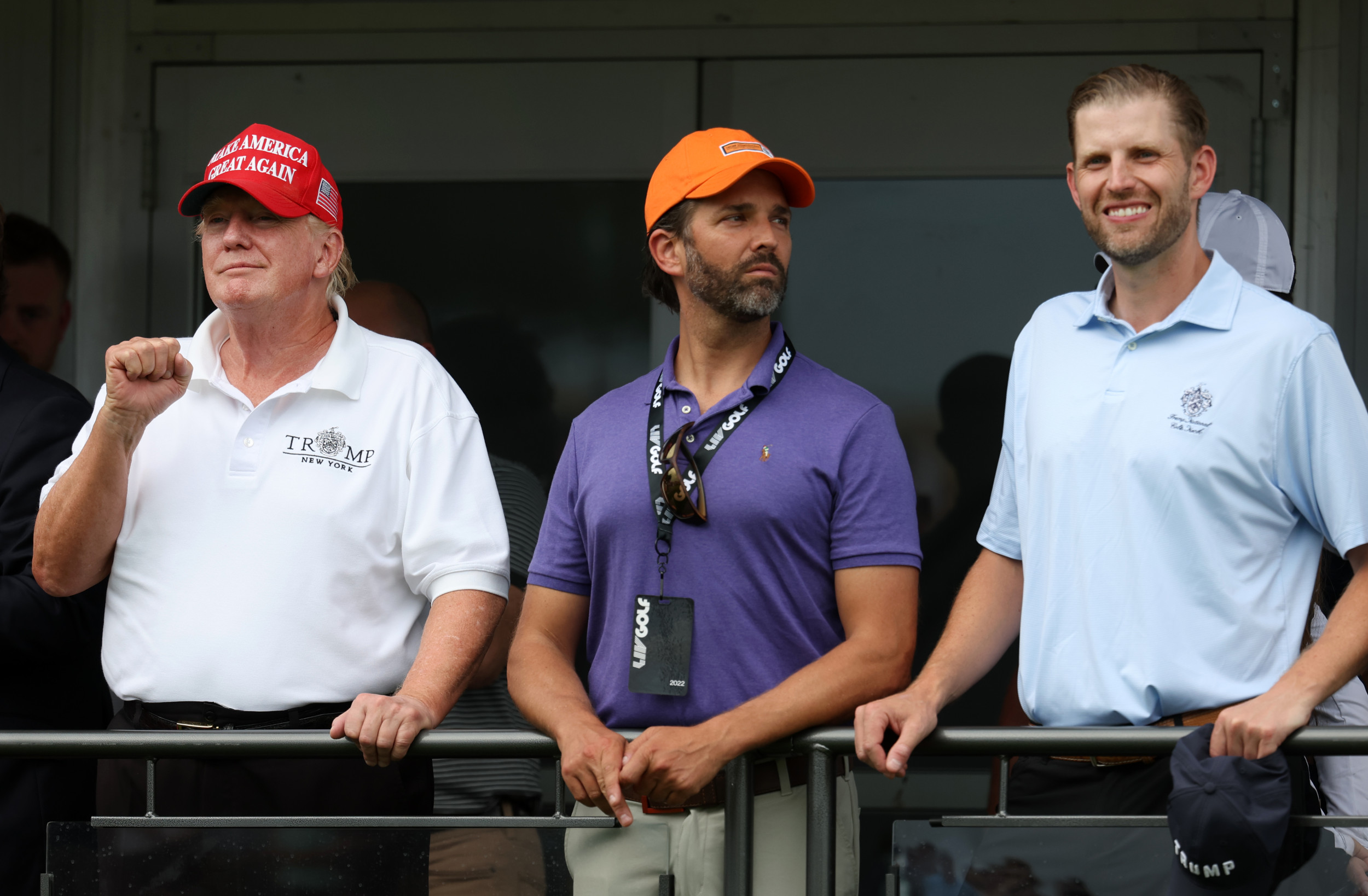Former President Donald Trump and his adult sons—Donald Trump Jr. and Eric Trump—have rushed to defend the value of the ex-president’s Mar-a-Lago estate in light of the New York court ruling that found the three Trumps liable of fraud.
Judge Arthur Engoron wrote in a decision Tuesday that Trump and his sons, alongside The Trump Organization and several other business entities associated with the former president, committed fraud by repeatedly inflating the value of many of Trump’s real estate assets. Engoron’s ruling partially granted New York Attorney General Letitia James’ motion for a summary judgment in her $250 million lawsuit against Trump and his business.
Among the list of properties included in Engoron’s ruling was Mar-a-Lago, the ex-president’s home in Palm Beach, Florida, as well as the Trump Park Avenue residential building in New York City. According to the judge, Trump consistently overvalued the properties on his financial statements, including once inflating Mar-a-Lago by at least 2,300 percent of its actual worth.
Eric Trump took to social media to denounce Engoron’s ruling, arguing that the judge’s valuation of Mar-a-Lago is nowhere close to the estate’s actual worth.
“In an attempt to destroy my father and kick him out of New York, a Judge just ruled that Mar-a-Lago, in Palm Beach Florida, is only worth approximate [sic] ‘$18 Million dollars’ … Mar-a-Lago is speculated to be worth we’ll [sic] over a billion dollars making it arguably the most valuable residential property in the country. It is all so corrupt and coordinated,” Eric Trump posted to X, formerly Twitter.
Engoron’s decision pointed to a Palm Beach County Assessor’s appraisal of the beachside estate between 2011 and 2021, during which time Mar-a-Lago was valued between $18 million and $27.6 million.
In another post, Eric Trump shared an unverified picture of houses for sale in Palm Beach, which are listed from $38.9 million to $59.9 million. He also claimed the homes listed “are about 1/30 the size of Mar-a-Lago, not on the beach (let alone the beach and intercostal [sic]), don’t span from once [sic] side of the Palm Beach Island to the other … it is a travesty of justice and an embarrassment to the court.”
In a statement shared to Truth Social, the former president dismissed Tuesday’s ruling as part of a “radical attack” to stand in the way of his 2024 reelection campaign. He also characterized Engoron as a “Highly Politicized Democrat Judge, who refused allowing the case to go to the Commercial Division, where it belonged.”
“As an example, this Democrat Operative valued Mar-a-Lago, the most spectacular and valuable property in Palm Beach, Florida, to be worth as low as $18 Million, when in actuality, it could be worth almost 100 times that amount,” the former president added.
Donald Trump Jr., the ex-president’s oldest son, also mocked Engoron’s valuation of Mar-a-Lago on X, writing in one post, “If Mar-a-Lago is worth $18 million … I’ll take 10 please!!!”
“If my father tried claiming the property was worth $18 million, he would probably then get charged with trying to underpay his real estate taxes!” Donald Trump Jr. continued in a separate post. “They’ve set the game up so it’s always lose/lose in these blue states. If you don’t abide by their narrative they will target you.”
Trump has repeatedly maintained his innocence regarding James’ accusations, and Trump lawyer Alina Habba told Newsweek in a statement Tuesday night that the ex-president’s defense team plans to “immediately appeal” the “flawed” decision. The remaining elements of the lawsuit are set to go to trial on Monday.
Newsweek has reached out to James’ office via email for comment.



